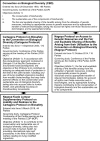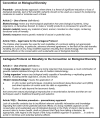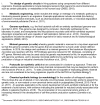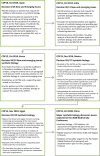Regulation of Synthetic Biology: Developments Under the Convention on Biological Diversity and Its Protocols
- PMID: 32328486
- PMCID: PMC7160928
- DOI: 10.3389/fbioe.2020.00310
Regulation of Synthetic Biology: Developments Under the Convention on Biological Diversity and Its Protocols
Abstract
The primary international forum deliberating the regulation of "synthetic biology" is the Convention on Biological Diversity (CBD), along with its subsidiary agreements concerned with the biosafety of living modified organisms (LMOs; Cartagena Protocol on Biosafety to the CBD), and access and benefit sharing in relation to genetic resources (Nagoya Protocol to the CBD). This discussion has been underway for almost 10 years under the CBD agenda items of "synthetic biology" and "new and emerging issues relating to the conservation and sustainable use of biological diversity," and more recently within the scope of Cartagena Protocol topics including risk assessment and risk management, and "digital sequence information" jointly with the Nagoya Protocol. There is no internationally accepted definition of "synthetic biology," with it used as an umbrella term in this forum to capture "new" biotechnologies and "new" applications of established biotechnologies, whether actual or conceptual. The CBD debates are characterized by polarized views on the adequacy of existing regulatory mechanisms for "new" types of LMOs, including the scope of the current regulatory frameworks, and procedures and tools for risk assessment and risk mitigation and/or management. This paper provides an overview of international developments in biotechnology regulation, including the application of the Cartagena Protocol and relevant policy developments, and reviews the development of the synthetic biology debate under the CBD and its Protocols, including the major issues expected in the lead up to and during the 2020 Biodiversity Conference.
Keywords: Cartagena Protocol on Biosafety; Nagoya Protocol on Access and Benefit Sharing; biotechnology regulation; digital sequence information; gene drives; living modified organisms; risk assessment; synthetic biology.
Copyright © 2020 Keiper and Atanassova.
Figures






References
-
- Australian Academy of Science [AAS] (2017). Discussion Paper: Synthetic Gene Drives in Australia – Implications of Emerging Technologies. Canberra: AAS.
Publication types
LinkOut - more resources
Full Text Sources

